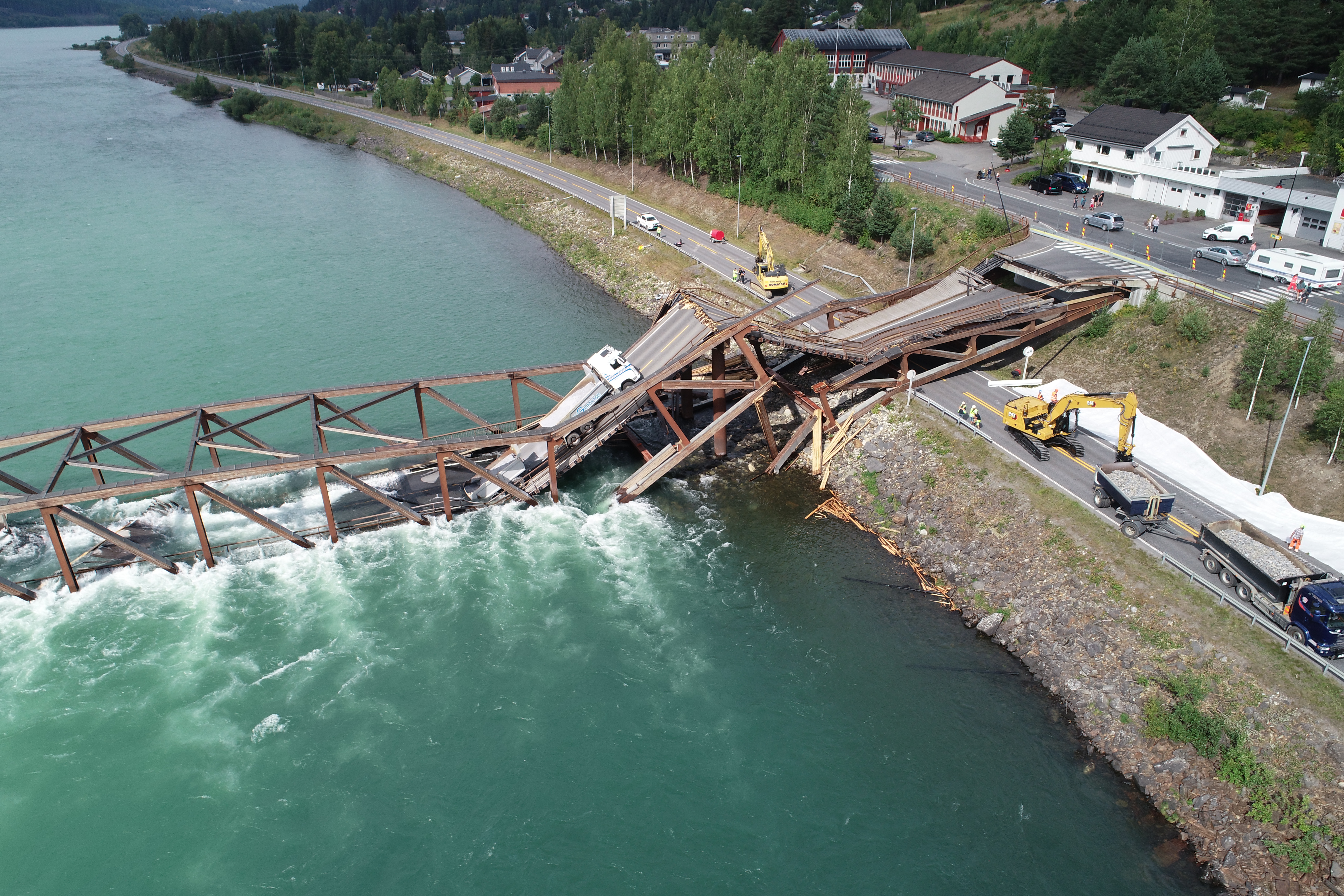A report on the August 2022 collapse of a timber laminate and steel truss bridge in Norway concludes that it was planned, designed and controlled with insufficient caution.
The collapse of Tretten Bridge in the river Gudbrandsdalslågen involved a lorry and a car but no one was injured. The bridge had been operating for ten years.
The technical investigation of the incident attributed the failure to block shear. This is covered in a previously published part of the report (link opens in new tab).
In the second part of the report, the Norwegian Safety Investigation Authority (NSIA) concludes that the structure was not robust because of the choice of material and a strong focus on aesthetics. The unusual design was also constructed quickly and on an existing foundation. The report adds that Tretton Bridge was designed in a transitional period between old and new regulations.

The collapse of the Tretton Bridge in August 2022 involved two vehicles. Credit: NSIA
The Norwegian Public Roads Administration (NPRA), which owns the bridge, identified faults when it re-calculated Tretton Bridge according to current regulations after the block-shear related Perkolo collapse in 2016. But it did not follow up these faults.
NSIA has recommended a review of NPRA, and regulatory development. It has also called for improvements to Norway’s current bridge management system, Brutus.




